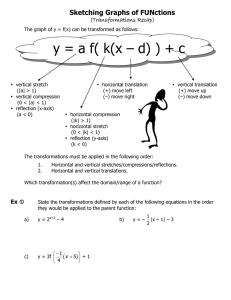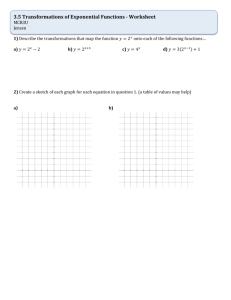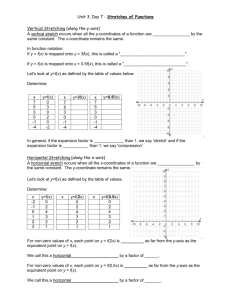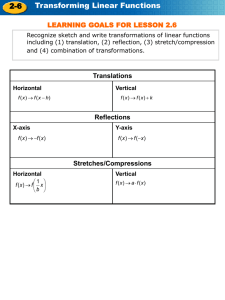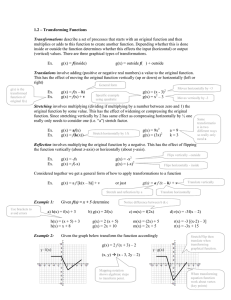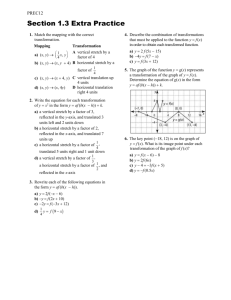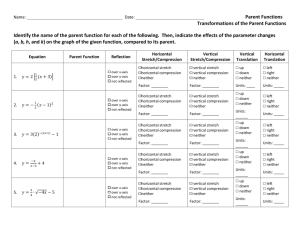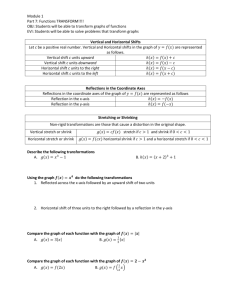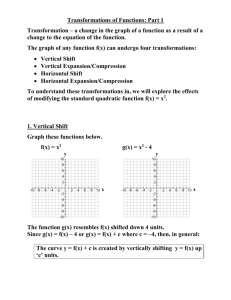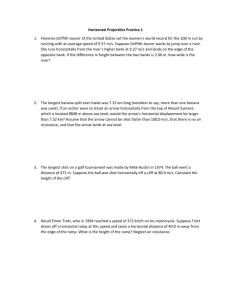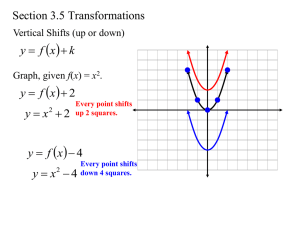Section 6.4
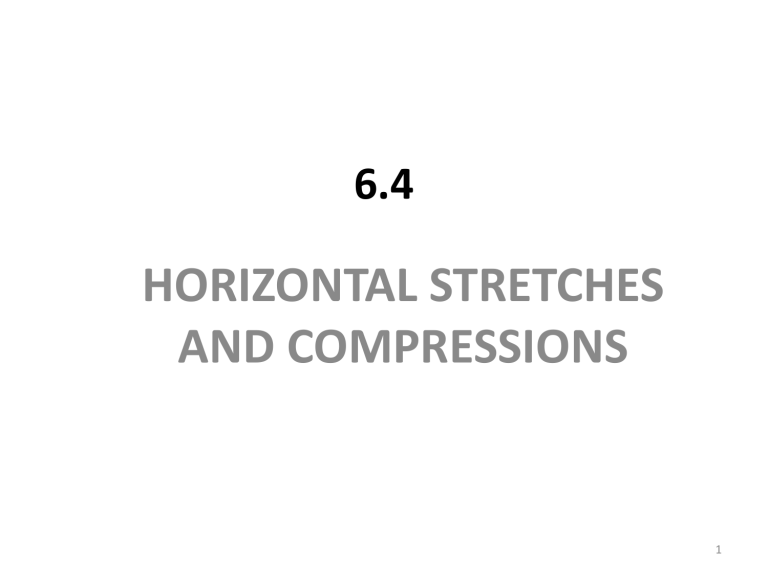
6.4
HORIZONTAL STRETCHES
AND COMPRESSIONS
1
Horizontally Compressed
Example 1
The values and graph of the function f(x) are shown in blue.
Make a table and a graph of the function g(x) = f(3x).
Solution
3
6
0
1 x f(x)
-6 36
-3
-1
9
1
0
1
9
36 x
-2
-1
-1/3
0
1/3
1
2 g(x)
36
9
1
0
1
9
36
2
Horizontally Stretched
Example 1
The values and graph of the function f(x) are shown in blue.
Make a table and a graph of the function g(x) = f(½ x).
Solution
2.0
2
3
0
1 x f(x)
-3 0
-2
-1
2
0
-1
0
-1
1 x
-6
-4
-2
0
2
4
6 g(x)
0
2
0
-1
0
-1
1
6 4 2
1.5
1.0
0.5
0.5
1.0
f(x)
2 4
g(x) = f(½ x)
6
3
Formula for Horizontal
Stretch or Compression
If f is a function and k a positive constant, then the graph of y = f(k x) is the graph of f
• Horizontally compressed by a factor of 1/k if k > 1,
• Horizontally stretched by a factor of 1/k if k < 1.
If k < 0, then the graph of y = f(kx) also involves a horizontal reflection about the y-axis.
4
Examples: Horizontal Stretch or Compression
Example 3
Match the functions f(t) = e t , g(t) = e 0.5t
, h(t) = e 0.8t
, j(t) = e 2t with the graphs
100
A B C D
50 t
Solution 0 5 10
Since the function j(t) = e 2t climbs fastest of the four and g(t) = e 0.5t climbs slowest, graph A must be j and graph D must be g.
Similarly, graph B is f and graph C is h.
5
Ordering Horizontal and Vertical
Transformations
For nonzero constants A, B, h and k, the graph of the function
y = A f(B (x − h)) + k is obtained by applying the transformations to the graph of f(x) in the following order:
• Horizontal stretch/compression by a factor of 1/|B|
• Horizontal shift by h units
• Vertical stretch/compression by a factor of |A|
• Vertical shift by k units
If A < 0, follow the vertical stretch/compression by a reflection about the x-axis.
If B < 0, follow the horizontal stretch/compression by a reflection about the y-axis.
6
